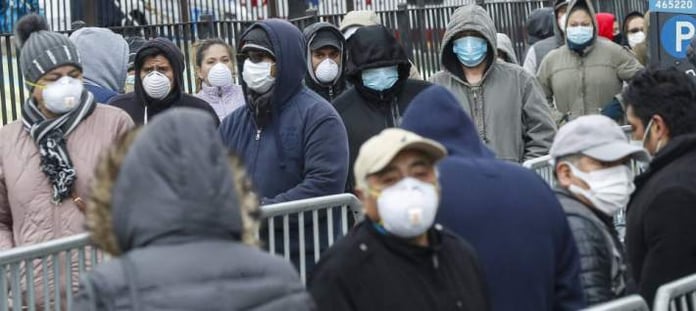
Is the scratchy throat just a cold or the coronavirus? In the United States, nearly 70,000 people have tested positive for Corona to date. More than 1,000 people have died. To prevent the healthcare system from collapsing, only those who have severe symptoms should go to the doctor. A video chat with a doctor should provide orientation.
Nothing has to be paid for telemedicine – at least if you are insured through Medicare. Medicare is for pensioners, they pay taxes on it during their working life. If they are treated for the coronavirus in hospital, however, personal contributions are still due, the Washington Post recently reported. Medicare patients would also have to pay $ 176 a day for hospitalization. That can still change. One thing is certain: Those who have Medicare are comparatively well off. But what about younger people who are poor or have no insurance at all?
According to the authorities, approximately twelve percent or nearly 40 million people in the United States live in poverty. Citizens who are not white are even more often poor, for example, blacks around 21 percent. The Medicaid public system is available for people below a certain income limit. It is intended to ensure basic medical care. Medicaid patients can only go to certain doctors. In 2017, 74 million citizens took advantage of the offer, which corresponds to 23 percent of all Americans. If you earn too much, you won’t get Medicaid. As a result, 28 million Americans do without health insurance.
Governors do not call on federal funds
The problem with Medicaid is that care varies greatly depending on where you live. 14 states are currently refusing to implement the “Affordable Care Act” envisaged under “Obamacare” – even though the federal government will bear most of the costs. These governors are not calling on the additional funds. As a result, an estimated 2.5 million people remain without insurance. Nine of these states are in the south.
Nowhere are Americans poorer than in the southern states. In Mississippi, almost 20 percent of the population lives below the poverty line. The governments in the south traditionally rely heavily on the slim state. The white upper and middle classes reacted to the state-ordered end of “racial segregation” in the 1960s with aggressive foreclosure and privatization strategies in all areas of public life, be it education, leisure or health. An ideology of the “small government”, whose roots also lie in this defense against the civil rights movement, still holds today.
Bottlenecks in New York
People who are not white still have less chance of good health care to this day. For example, a hospital that takes Medicaid patients often cares for many communities – long journeys are not uncommon. An example of the situation of the poor in healthcare is the higher maternal mortality rate among African-American women. You are three times more likely to die from complications from pregnancy or from the birth of a child than white women.
The factors that, under normal circumstances, lead to poorer health care for the poor will also play a role in the corona crisis. At the moment, public attention is focused on New York, because the sheer mass of those infected already creates bottlenecks. In general, the health systems of the big cities are often better positioned than in rural areas, especially for low-income patients. Those who do not have health insurance can go to non-profit health centers in New York, which are financed by donations and government grants. Some hospitals also offer free or greatly reduced treatments in an emergency. At universities, doctors in training treat at cheaper prices. But these offers are not prepared for a pass rush.
Hospitals have been closed
Experts fear that supply shortages will soon also arise in rural areas. Fifteen percent of Americans live there. They are older than elsewhere, namely an average of 73.3 years. They are also poorer than in the cities and more often have chronic diseases such as diabetes. According to a recent calculation by the news agency AP, there are 51,000 beds in intensive care units in the urban centers of America. All rural communities together have only 5600 such places. In total, this is slightly more than twice as many beds as are available in Germany – but for a population more than four times as large.













